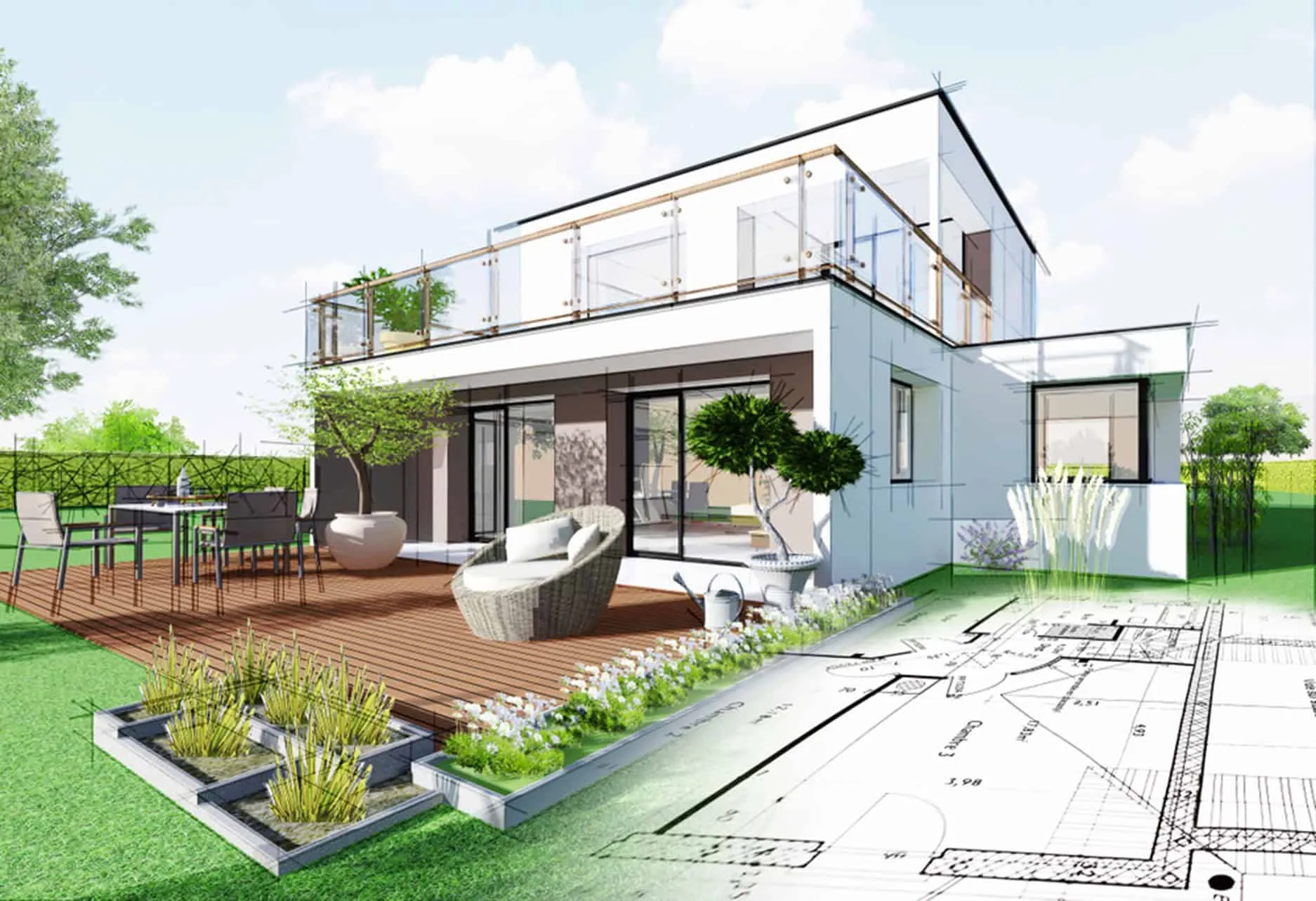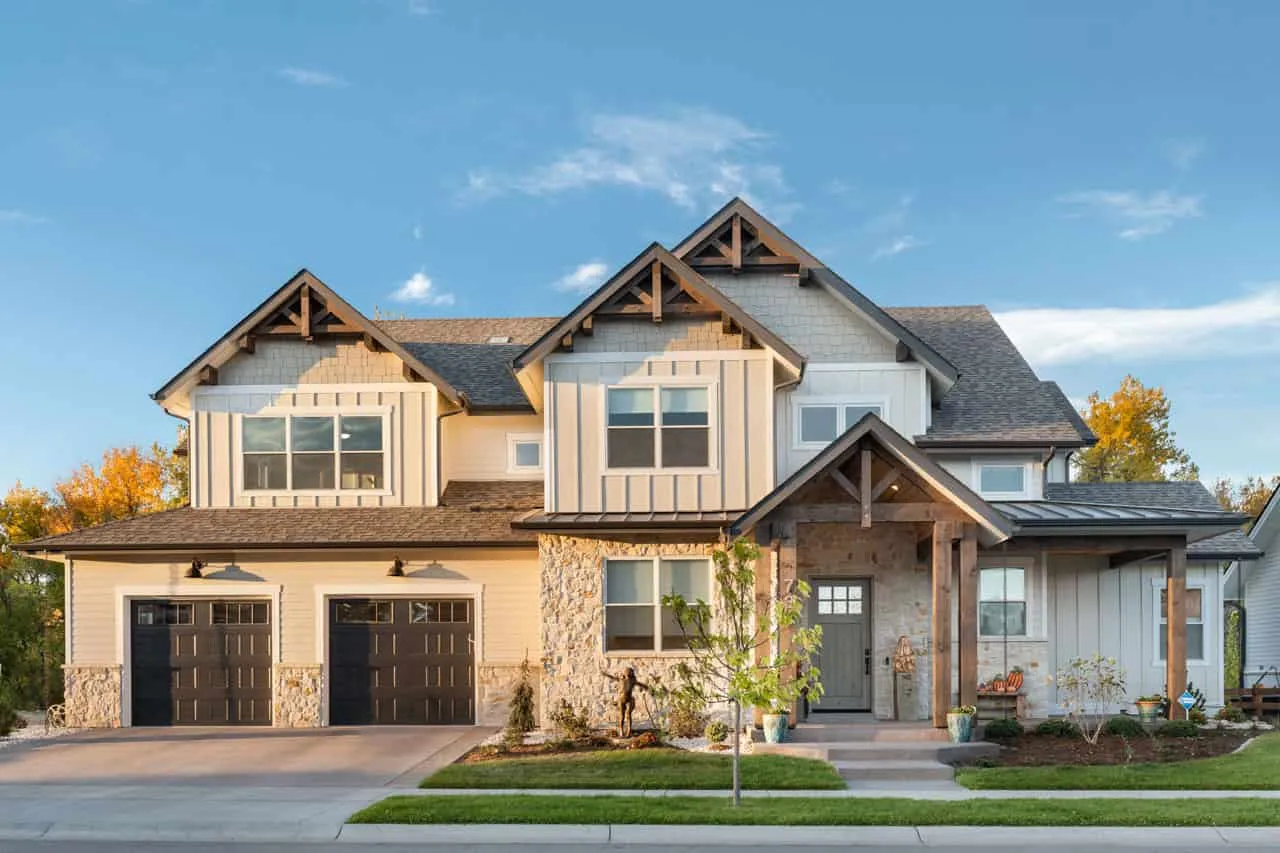There can be your advertisement
300x150
6 Ecological Factors to Consider When Building a New House
A recent cultural shift in architecture has led to more builders and homebuyers striving to create homes that harmonize with the local landscape rather than oppose the natural world. However, there are many benefits to designing an environmentally conscious modern home, including reducing risks of damage from weather conditions that could lead to insurance payouts for your home insurance, as well as increasing indoor comfort by building a house that truly considers the local climate, potentially reducing heating and other utility costs.
How can future homeowners ensure their new house is designed with the environment in mind? We will examine 6 key ecological factors that must be considered to be absolutely certain your new home was built and designed with care for a more eco-friendly future.

1. Local Weather Conditions
Local climatic conditions are a natural priority for many home builders, especially in regions with extreme weather such as heat in summer and cold in winter. Simply put, a house not equipped with appropriate features for protection against the elements is unlikely to be a comfortable place to live.
Considering local weather conditions usually determines the choice of insulation materials when building any residential property, as well as the type of windows installed in the house. For example, areas prone to freezing temperatures typically use double-glazed windows with thermal insulation to retain heat and minimize heat transfer.
Besides home insulation and window design, local climate conditions may also determine the building materials used. Since metal corrosion is a problem in coastal areas, builders designing beach properties often prefer to use treated wood or corrosion-resistant metals such as coated or treated steel and copper alloys, although copper is a significantly rarer building material.
2. Solar Orientation
The placement of windows in a new home should also consider the solar orientation of the house and the lot it will be situated on. Designing with solar orientation can provide many benefits, including enhancing a new home's ability to naturally regulate temperature (through passive heating and cooling principles), as well as reducing the likelihood of glare or sun damage inside the home.
It is also important to note that due to Earth's axis, the sun is in the northern part of the sky in the southern hemisphere and the southern part in the northern. For this reason, modern homes in the southern hemisphere often feature more windows facing south, while those in the northern hemisphere face north to minimize overall solar exposure on bedrooms and reduce heat buildup inside these rooms throughout the day.
While trees can limit sunlight on a lot, these natural barriers should not be considered permanent. Trees can be trimmed or removed to increase the amount of sunlight and natural light on a property.
3. Energy Efficiency
We briefly touched on passive heating and cooling when discussing solar orientation design. In fact, passive heating and cooling involve much more than just window placement. Incorporating ventilation, wall, ceiling, and floor insulation, as well as using specific building materials can play a significant role in enhancing passive heating and cooling for any modern home. In turn, this may significantly reduce utility costs since you won't need to rely so heavily on gas or electric heating and cooling systems to maintain a comfortable indoor temperature year-round.
Choosing home appliances (such as dishwashers, air conditioners, etc.) based on their water and energy ratings can also improve the overall energy efficiency of your modern home. Similarly, environmentally conscious homeowners may install solar panels on their roof. As you might imagine, solar panels are best installed on the northern side of a roof in the southern hemisphere and the southern side in the northern, due to differences in solar exposure levels and sun position between hemispheres.
4. Public Transportation Accessibility
If you plan to build a house on the outskirts of a major urban center, connectivity with public transportation may become an important factor. Ensuring access to a reliable public transit network can help your family minimize their carbon footprint. On the contrary, building a house in an area where personal vehicle use is more necessary naturally increases your family's overall greenhouse gas emissions and fuel consumption.
Evaluating the accessibility of your home should also include mapping all routes that can lead you home during peak traffic hours. Traffic jams are a common problem for many homeowners who want to build homes in development zones or on city outskirts. If you've done the necessary checks and determined that you have a healthy range of options (including roads and public transport alternatives) to get home or are aware that additional roads are being constructed, living in your new neighborhood will be much more comfortable.

5. Proximity to Green Spaces and Wildlife Corridors
Besides considering the location of your future home in relation to public transportation and roads, it is also important to assess proximity to local green spaces and wildlife corridors. This is particularly important for two main reasons.
Firstly, having green spaces nearby can be an essential element for maintaining your health and well-being as a family. Ecologists and psychologists working in rapidly growing cities around the world have found a strong correlation between residents' mental health and access to urban green spaces.
Secondly, more seriously, local water features such as streams running through green corridors may be prone to flooding during extreme weather conditions. If your lot is located in a watershed area of streams or rivers, you should conduct an independent study to determine flood incidents over the past ten years and assess the risk that your home or wider area may be flooded during increased rainfall.
It is also very important to stay aware of animals you might encounter in wildlife corridors. For example, in many cities and towns in North America, one must be cautious of bears that may enter urban areas. Similarly, suburbs of major Australian cities often encounter wild kangaroos, possums and possibly even some protected or introduced local bird species.
6. Durability of Building Materials
Finally, evaluating the durability of building materials used in constructing a house is an important procedure for builders aiming to create low-carbon footprint structures. Whether you are building property in Europe, America or Oceania, you will always have a wide range of building materials to choose from. The problem with imported materials is that they typically come with larger carbon footprints due to greenhouse gas emissions from transport activities.
You can maintain a minimal carbon footprint for your home simply by choosing locally produced materials wherever possible. Organic materials such as local timber can also help further reduce your home's carbon footprint and possibly lower overall construction costs.
Considering all of these ecological factors, the likelihood that your new home will not only be environmentally friendly but also designed with future considerations in mind—both in terms of structural strength and longevity of your property, as well as ensuring comfort for your family from season to season—is very high.
More articles:
 5 Reasons to Add Natural Elements to Home Design
5 Reasons to Add Natural Elements to Home Design 5 Safety Functions to Consider When Designing Buildings
5 Safety Functions to Consider When Designing Buildings 5 Signs That Indicate the Need for a Well Water System
5 Signs That Indicate the Need for a Well Water System 5 Simple and Affordable Ways to Make Your Home Cozy
5 Simple and Affordable Ways to Make Your Home Cozy 5 Space-Saving Solutions for Home Use
5 Space-Saving Solutions for Home Use 5 Steps to Planning the Perfect Custom Pantry
5 Steps to Planning the Perfect Custom Pantry 5 Stylish Tables for Home Office
5 Stylish Tables for Home Office 5 Things to Consider Before Choosing Plaster
5 Things to Consider Before Choosing Plaster